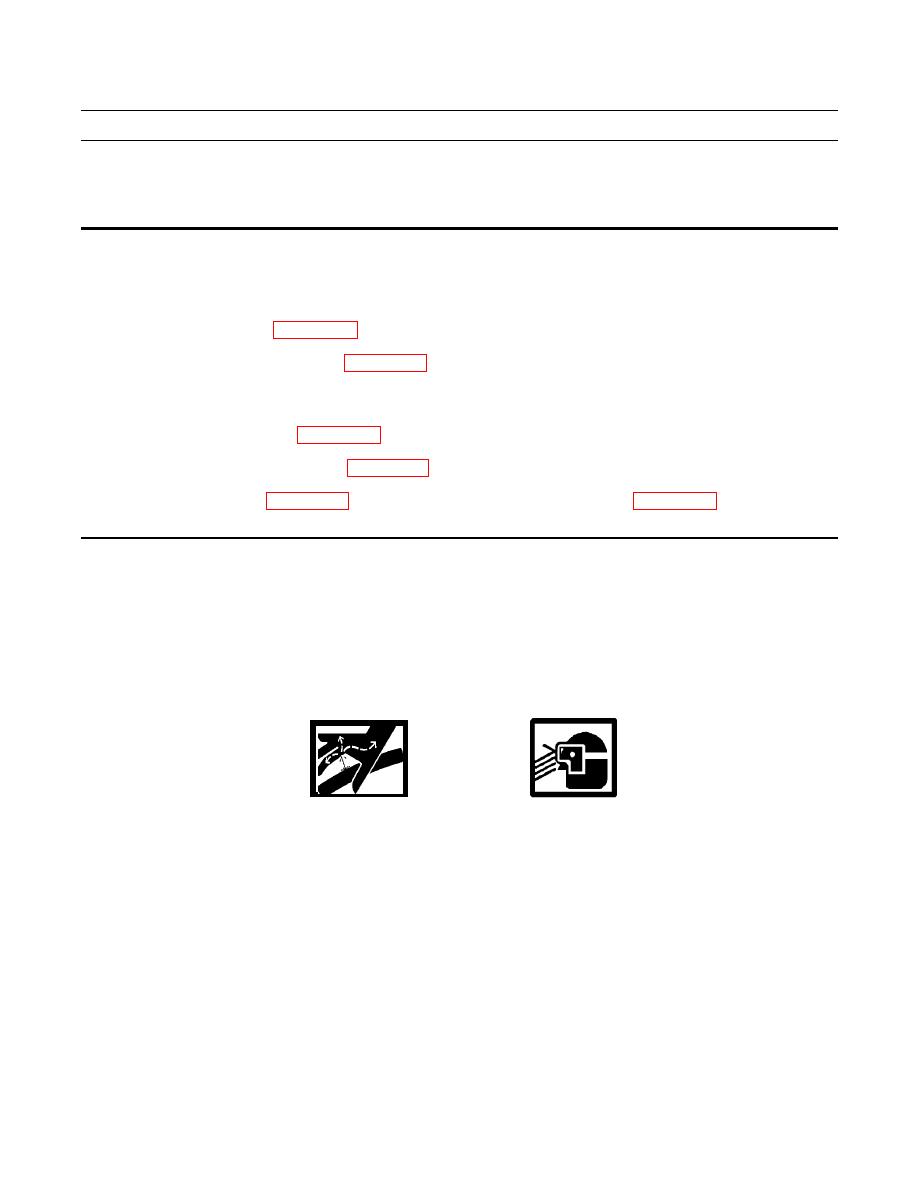 |
|||
|
|
|||
|
Page Title:
HYDRAULIC SYSTEM LINES AND FITTINGS REPAIR |
|
||
| ||||||||||
|
|
 TM 5-2410-237-23
HYDRAULIC SYSTEM LINES AND FITTINGS REPAIR
THIS WORK PACKAGE COVERS
Introduction, Disassembly, Cleaning and Inspection, Repair, Fabrication of Hose Assembly
INITIAL SETUP
Materials/Parts - Continued
Tools and Special Tools
Couplings (as required)
Tool outfit, hydraulic system test and repair
Hose (as required)
(HSTRU) (Item 124, WP 0250 00)
References
Press, hydraulic, portable (Item 75, WP 0250 00)
TM 9-4940-468-13
Materials/Parts
Equipment Condition
Machine parked on level ground (TM 5-2410-237-
Cap set, protective (Item 2, WP 0249 00)
10)
Oil, lubricating (Item 23, 24, or 25, WP 0249 00)
Hydraulic system
Pressure relieved (WP 0241 00)
Rag, wiping (Item 29, WP 0249 00)
INTRODUCTION
1.
This work package and referenced technical manual (TM 9-4940-468-13) for the Hydraulic System Test and Repair,
(HSTRU) provides all the required WARNINGs, CAUTIONs, NOTEs and procedures for the maintenance of hydraulic
hose assemblies.
2.
Before attempting to disassemble, repair, or fabricate any hydraulic hose(s) utilizing the HSTRU, read and understand
all WARNINGs, CAUTIONs and NOTEs in this work package and in TM 9-4940-468-13.
WARNING
Do NOT remove or disconnect any hydraulic system line or fitting unless hydraulic system pressure
has been relieved. Hydraulic system pressure can be over 2500 psi (17,237 kPa), even with engine and
pump OFF. To relieve pressure, lower all hydraulic attachments to the ground and shut down engine.
Move control levers through all operating positions, then SLOWLY loosen hydraulic tank filler cap.
After maintenance, tighten all connections before applying pressure. Escaping hydraulic fluid under
pressure can penetrate the skin, causing serious injury or death.
At operating temperature hydraulic oil is hot. Allow hydraulic oil to cool before disconnecting any
hydraulics. Failure to do so could result in injury.
|
|
Privacy Statement - Press Release - Copyright Information. - Contact Us |